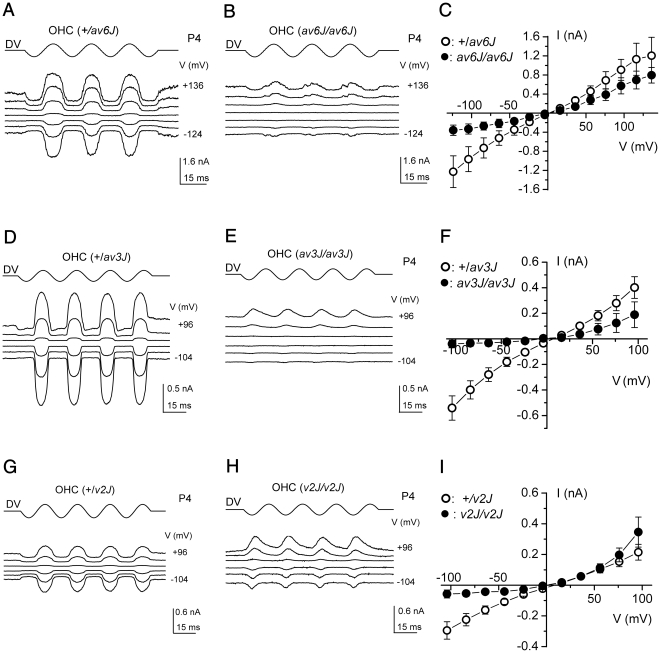Figure 6. Mechano-electrical transduction in av6J, av3J and v2J outer hair cells.
(A, B) Transducer currents from heterozygous +/av6J and homozygous av6J/av6J P4 OHCs in response to 45 Hz sinusoidal force stimuli. Holding potential was −84 mV and the membrane potential was stepped, in 20 mV increments, between −124 mV and +136 mV. For clarity only responses to every third voltage step are shown. Driver voltage (DV, amplitude 40 V) to the fluid jet is shown above the traces. Positive DVs move the hair bundle towards the kinocilium. Membrane potentials are shown next to some of the traces. Recordings shown are single traces and are offset so that the zero-transducer current levels are equally spaced. (A): Cm 2.9 pF; Rs 1.9 MΩ. (B): Cm 3.4 pF; Rs 1.4 MΩ. (C) Averaged current-voltage curves, measured peak-to-peak from two +/av6J OHCs (one P4 and one P5) and three av6J/av6J OHCs (one P4 and two P5). (D, E) Transducer currents from heterozygous +/av3J and homozygous av3J/av3J P4 OHCs. Cells were held at −84 mV and the membrane potential was stepped, in 20 mV increments, between −104 mV and +96 mV. Only responses to every other voltage step are shown. Driver voltage was 35 V. Recordings in (D) and (E) are averages of 4 repetitions each, (D): Cm 6.2 pF; Rs 1.9 MΩ. (E): Cm 5.8 pF; Rs 1.5 MΩ. (F) Average current-voltage curves, measured peak-to-peak, for five +/av3J (P2+2) and five av3J/av3J (P2+2) OHCs. (G, H) Transducer currents from heterozygous +/v2J (P0+3) and homozygous v2J/v2J (P1+2) OHCs, stimulus protocol and data presentation as in (D, E). Recordings averaged from 3 (G) and 2 (H) repetitions. (G): Cm 5.9 pF; Rs 4.3 MΩ. (H): Cm 4.9 pF; Rs 4.0 MΩ. (I) Averaged current-voltage curves, measured peak-to-peak from two +/v2J OHCs (P0+3) and three v2J/v2J (P0+3 and P1+2) OHCs.

